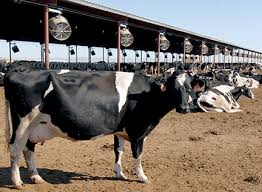Government commits to trimming dairy sector production costs
GOVERNMENT has committed to taking policy steps that enhance competitiveness by reducing dairy sector production costs in order to boost domestic output as well as enhance the participation of local farmers in the African Continental Free Trade Area (AfCFTA).
The Ministry of Lands, Agriculture, Fisheries, Water and Rural Development is already seized with the matter as part of strategies to increase raw milk production to meet national needs.
African Continental Free Trade Area (AfCFTA).
Riding on enhanced Government policy support and deliberate strategies to revamp the agriculture value chain on, dairy farmers have increased output to 91 million litres in 2022 up from 79,9 million litres recorded the previous year.
In an interview during a recent tour of one of the dairy farms near Bulawayo, which was part of the celebrations to mark World Milk Day, Ministry of Lands, Agriculture, Fisheries, Water and Rural Development chief dairy officer, Mr Edmore Waniwa, said Zimbabwe has a huge potential to boost milk production and value addition in line with the country needs of about 130 million litres per year.
The challenge is that farmers are constrained by the high production costs, which tends to affect their competitiveness when compared to sub-regional, continental and international producers.
“We have challenges with stockfeed in the country and we need to find ways to have low-cost feed production because that’s the highest production cost in dairy farming, which comes in at 70 to 80 percent of total production cost,” said Mr Waniwa.
“As we move to the future there is opening up of borders with the trade agreements, which the country is a signatory to so we need to prepare and be able to compete with other regional and continental products especially South Africa, which produces milk at a cost of US$0,35 per litre compared to ours, which is at US$0,54 per litre.”
Mr Waniwa said the challenge is at the production level where the country has got a shortage of raw milk, which is required for processing.
He said the Government in partnership with private players and development partners is now directing its efforts at boosting milk production through sponsoring and funding dairy farmers.
“Through the Dairy Revitalisation Programme, the Government has partnered with the private sector in improving milk production and we have funding from EU, USAID and other such organisations that have different packages to assist farmers,” said Mr Waniwa.
He said there is capacity to process more than 400 million litres of milk a year but the country was only utilising 91 million litres.
“So, there is a gap hence we are working hard to boost milk production so that we have enough raw milk,” said Mr Waniwa.
To reduce the cost of doing business, dairy farmers have been urged to grow their own pastures as it costs less compared to buying stockfeed.
Zimbabwe Association for Dairy Farmers (ZADF) chairperson for Matabeleland Ms Dorothy Mupfanochiya said dairy farmers should grow different pastures to reduce the cost of production.
“We are trying our best to assist farmers to grow their own forage, it can be Lucerne, ray grass or sun hemp because some do very well in winter and others in summer,” said Mr Mupfanochiya.
She said during the rainy season farmers are encouraged to do silage so that they keep the feed for the dry season.
One of the development partners, Transforming Zimbabwe Dairy Value Chain for the Future through a seven million Euro-project funded by the European Union, has managed to give heifers to some of the dairy farmers in Matabeleland.
Project co-ordinator, Dr Edson Chifamba, said the partnerships between different stakeholders in the dairy sector, Government and development partners, has seen an increase in dairy production.
He said the project is assisting commercial, medium and small-scale dairy farmers. — chronicle











